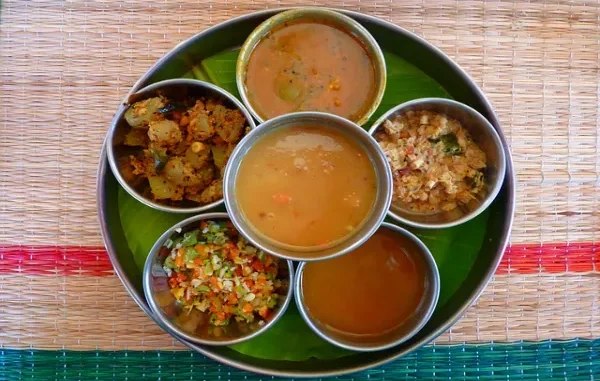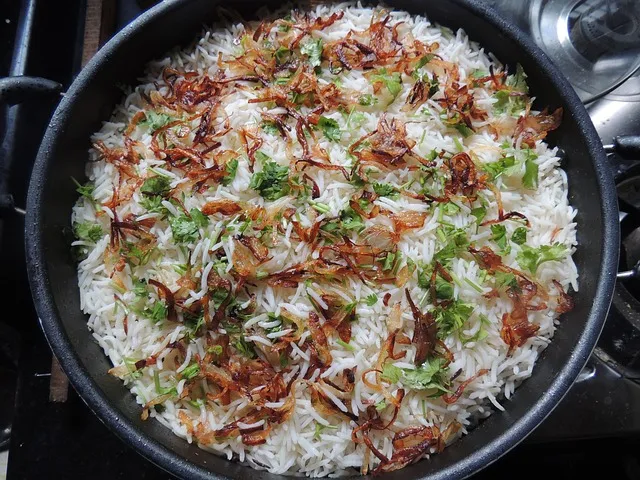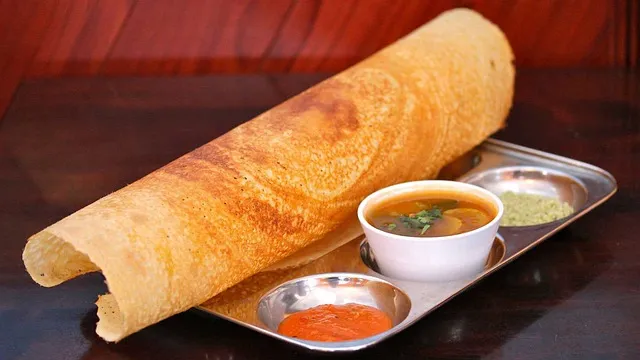
A journey through vibrant flavors and bold spices awaits in Indian cuisine, from creamy northern curries to fiery southern dishes. Beyond its delicious taste, it boasts a fascinating history and interesting facts about Indian food waiting to be explored.
“Spice Up Your Life: The Incredible Health Benefits of Indian Spices”
Beyond their vibrant flavors and enticing aromas, Indian spices boast an impressive array of health benefits. Used for centuries in traditional Indian medicine, these culinary powerhouses, like turmeric, cumin, and cardamom, offer solutions for various ailments.
Turmeric, arguably the most recognized Indian spice, holds the key compound curcumin, known for its anti-inflammatory and antioxidant properties. Studies suggest curcumin’s ability to reduce inflammation, linked to chronic diseases like heart disease, arthritis, and even cancer.
Cumin, another staple in Indian cooking, not only adds a warm, earthy touch but also aids in digestion. The spice contains compounds that stimulate the production of digestive enzymes, promoting better digestion and reducing bloating and gas.
Cardamom isn’t just for sweet treats – this versatile spice, commonly found in Indian desserts and chai tea, packs a surprising punch. Studies suggest it possesses antimicrobial properties, aiding in oral health by combating mouth bacteria. Additionally, its potential anti-inflammatory effects might contribute to lower blood pressure and cholesterol levels.
But cardamom is just one example. Indian cuisine boasts a treasure trove of spices like cinnamon, ginger, and cloves, each offering unique health benefits. These include blood sugar control support, reduced nausea and inflammation, and even a boost to your immune system.
By incorporating these culinary gems into your cooking, you don’t just elevate your dishes with exquisite flavors, you also unlock a world of potential health benefits. So, embrace the vibrant world of Indian spices, and add a dash of both taste and well-being to your life!
“From Roti to Dosas: A Culinary Journey Through India’s Diverse Bread Culture”
India’s landscape of flavors isn’t complete without exploring its diverse breads, a testament to the nation’s rich culinary tapestry and regional variations. From the North, soft and fluffy rotis offer a comforting contrast to the South’s crisp and savory dosas, each reflecting the unique character of their origin.
Roti, also known as chapati or phulka, forms the cornerstone of North Indian meals. This simple flatbread, crafted from whole wheat flour, water, and a touch of salt, is rolled thin and cooked on a griddle until golden and puffed. It’s a versatile companion, perfectly suited to be enjoyed alongside curries, dals, and various vegetable dishes.

Meanwhile, the South ushers in dosas, a popular breakfast staple. This fermented marvel, made from a batter of rice and lentils, transforms into a crispy, golden crepe-like delight when cooked on a hot griddle. Dosas can be enjoyed plain or dressed up with fillings like spiced potatoes, onions, and chutneys, offering a delightful canvas for culinary exploration.
Beyond the classic rotis and dosas, India’s bread basket overflows with variety. Naan, a soft and fluffy leavened masterpiece, boasts a unique char from its traditional tandoor oven cooking. Parathas, on the other hand, offer a delightful textural experience – flaky and layered flatbreads, often stuffed with vibrant fillings like spiced vegetables, paneer, or even minced meat.
From scooping up a spicy curry to complementing a tangy chutney, Indian breads shine as versatile and delicious companions to any meal. Each region adds its own unique touch to traditional recipes, making a culinary exploration through India’s diverse bread culture a flavorful and unforgettable adventure.
“The Surprising History of Indian Street Food and Its Global Influence”
The history of Indian street food is a rich tapestry woven over centuries. From the bustling heart of Delhi’s markets to the vibrant chaos of Mumbai’s alleys, street food has become an integral part of the nation’s culinary identity. What might surprise many is its global influence, leaving its mark on diverse cuisines worldwide.
One iconic example is chaat, a savory symphony of flavors combining fried dough, potatoes, chickpeas, and a tangy tamarind chutney. Its origins trace back to the Mughal Empire, where it graced royal tables as an appetizer before taking to the streets of Delhi and beyond. Today, chaat transcends borders, gracing menus of Indian restaurants and food stalls, from London’s streets to New York City’s sidewalks.
Another popular street gem is vada pav, a spicy potato fritter nestled within a warm bun. This culinary creation hails from Maharashtra, capturing the hearts (and stomachs) of cities like Mumbai and Pune. Its simple yet flavorful combination has won over locals and tourists alike, even inspiring variations in other countries, like the “Bombay burger” found in the United States.
The influence of Indian street food extends far beyond its borders. Dishes like samosas, dosas, and biryani have transcended their street food origins, finding their way onto menus worldwide. This global embrace has propelled Indian street food into a full-fledged culinary trend, with food trucks and pop-up stalls offering vibrant homages to India’s unique flavors.
In conclusion, Indian street food’s rich history not only embodies the nation’s culinary spirit but also showcases its remarkable adaptability. From the bustling streets of India to the vibrant corners of the world, this culinary gem has left an undeniable mark, captivating the hearts (and taste buds) of food lovers everywhere. Keep reading the interesting facts about Indian food.
“Beyond Butter Chicken: Exploring the Rich and Varied Flavors of Indian Cuisine”

Unveiling the culinary tapestry of India reveals a diverse landscape, mirroring the richness of the nation itself. While popular dishes like butter chicken and naan bread may be familiar to many, a deeper exploration awaits in the vibrant tapestry of flavors that truly define Indian cuisine. Each region boasts its unique interpretation of traditional dishes, passed down through generations, offering a spectrum of tastes, from the fiery heat of curries to the fragrant allure of biryanis.
A defining characteristic of Indian cuisine lies in its masterful use of spices. A symphony of flavors unfolds as a diverse array of spices, herbs, and seasonings come together. From the aromatic warmth of garam masala to the fiery intensity of red chili powder, each element contributes its unique note, creating a complex and captivating taste profile.
Beyond the dance of spices, Indian cuisine embraces a wide variety of ingredients, weaving vegetables, lentils, meats, and seafood into its culinary tapestry. Each element is carefully chosen and prepared to highlight its natural essence, resulting in dishes that are both nourishing and delectable. So, embark on a culinary adventure and discover the hidden depths of flavor that await within the diverse and vibrant world of Indian cuisine.
Look beyond the familiar butter chicken and discover a world of culinary wonders. Indian cuisine boasts a kaleidoscope of flavors, from the delicate dosa of the South to the hearty comfort of a Punjabi thali. Whether you crave fiery spice or mild satisfaction, there’s a dish waiting to tantalize your taste buds and leave you wanting more. So, embark on a delicious adventure and explore the rich tapestry of Indian flavors.
“The Secret Ingredient: How Ayurvedic Principles Influence Traditional Indian Cooking”
The ancient Indian holistic health system, Ayurveda, has woven its wisdom deeply into the fabric of traditional Indian cooking. This philosophy emphasizes achieving balance between mind, body, and spirit. These principles manifest in the selection of ingredients, cooking methods, and even the timing of meals in Indian cuisine. This philosophy emphasizes achieving balance between mind, body, and spirit.
One cornerstone of Ayurveda is the classification of foods based on their inherent qualities and their impact on the body, known as doshas. The three primary doshas—Vata, Pitta, and Kapha—each correspond to specific elements. The goal of Ayurvedic cooking is to maintain a balance of these doshas by choosing ingredients.

For instance, individuals with a dominant Vata dosha, associated with air and ether elements, may benefit from incorporating warming and grounding foods like root vegetables, grains, and nuts. Conversely, those with a Pitta dosha, linked to fire and water, might find their balance in cooling and hydrating foods like cucumbers, leafy greens, and coconut.
By understanding and applying Ayurvedic principles, Indian cuisine becomes not just a culinary adventure but a journey towards holistic well-being.
The influence of Ayurveda extends beyond dosha-specific ingredients. Cooking techniques and spices also play a crucial role. For example, the ubiquitous turmeric, cumin, and coriander are not just flavor enhancers – they’re believed to aid digestion, reduce inflammation, and promote overall balance.
Furthermore, Ayurveda emphasizes mindful eating – being present and aware while consuming food. This involves savoring the tastes, textures, and aromas, while maintaining portion control and regular mealtimes.
In essence, Ayurveda’s principles permeate traditional Indian cooking, influencing not just the ingredients and flavors, but the entire approach to food and well-being. By embracing these principles, individuals can unlock the benefits of a balanced diet that nourishes both body and soul.
If you enjoyed the interesting facts about Indian food, keep reading here.






Leave a Reply